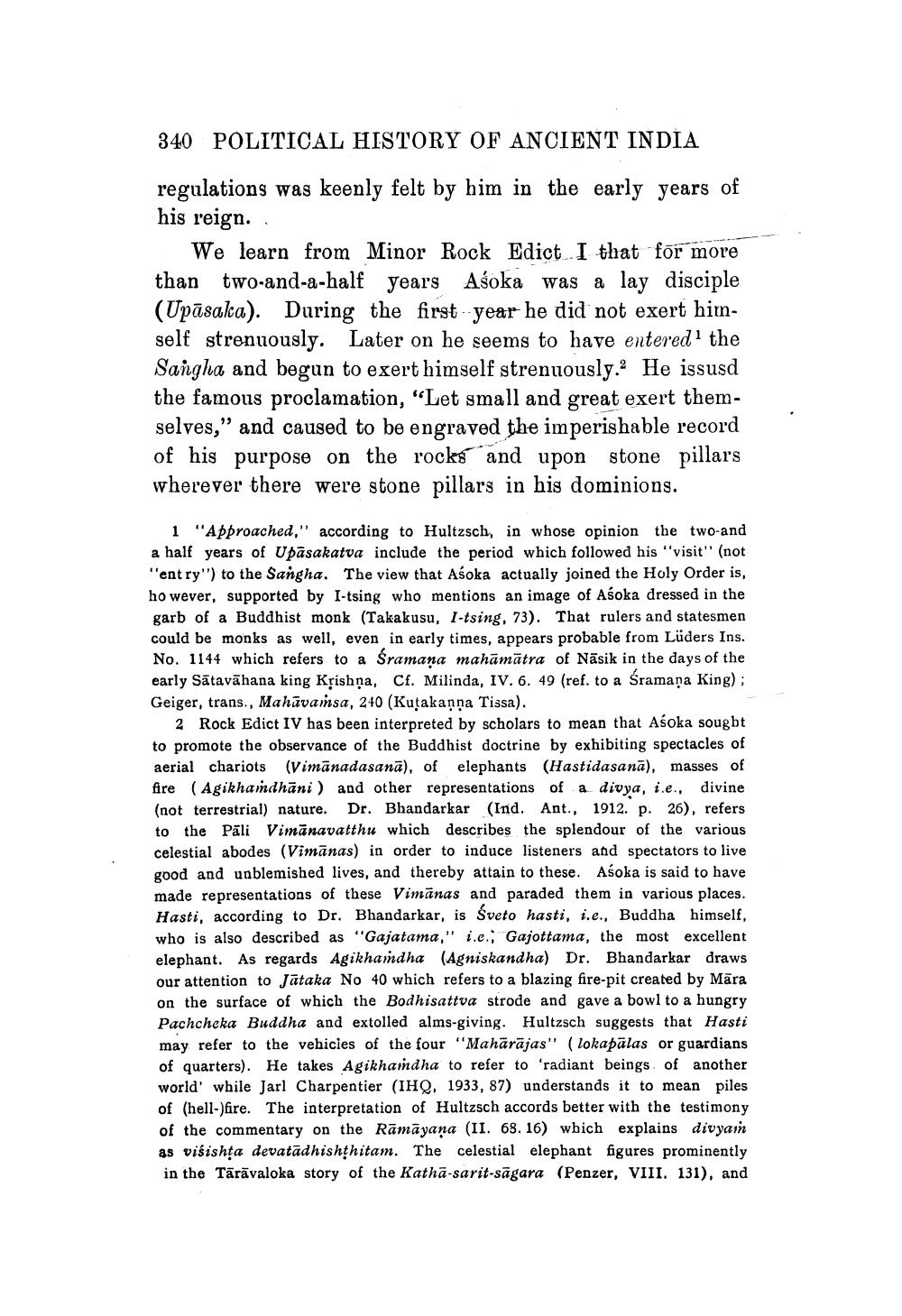________________
340 POLITICAL HISTORY OF ANCIENT INDIA regulations was keenly felt by him in the early years of his reign.
We learn from Minor Rock Edict I that for more than two-and-a-half years Asoka was a lay disciple (Upāsaka). During the first year he did not exert himself strenuously. Later on he seems to have entered the Sangha and begun to exert himself strenuously. He issusd the famous proclamation, "Let small and great exert themselves," and caused to be engraved the imperishable record of his purpose on the rocks and upon stone pillars wherever there were stone pillars in his dominions.
1 "Approached,” according to Hultzsch, in whose opinion the two-and a half years of Upāsakatva include the period which followed his "visit" (not "entry'') to the Sangha. The view that Asoka actually joined the Holy Order is, however, supported by I-tsing who mentions an image of Asoka dressed in the garb of a Buddhist monk (Takakusu, I-tsing, 73). That rulers and statesmen could be monks as well, even in early times, appears probable from Lüders Ins. No. 1144 which refers to a Sramana mahāmātra of Nāsik in the days of the early Sātavāhana king Krishṇa, Cf. Milinda, IV. 6. 49 (ref. to a śramana King); Geiger, trans., Mahāvamsa, 240 (Kutakanna Tissa).
2 Rock Edict IV has been interpreted by scholars to mean that Asoka sought to promote the observance of the Buddhist doctrine by exhibiting spectacles of aerial chariots (Vimānadasanā), of elephants (Hastidasana), masses of fire (Agikhandhāni) and other representations of a divya, i.e., divine (not terrestrial) nature. Dr. Bhandarkar (Ind. Ant., 1912. p. 26), refers to the Pali Vimānavatthu which describes the splendour of the various celestial abodes (Vimānas) in order to induce listeners and spectators to live good and unblemished lives, and thereby attain to these. Asoka is said to have made representations of these Vimānas and paraded them in various places. Hasti, according to Dr. Bhandarkar, is Sveto hasti, i.e., Buddha himself, who is also described as "Gajatama," i.e. Gajottama, the most excellent elephant. As regards Agikhaidha (Agniskandha) Dr. Bhandarkar draws our attention to Jataka No 40 which refers to a blazing fire-pit created by Māra on the surface of which the Bodhisattva strode and gave a bowl to a hungry Pachcheka Buddha and extolled alms-giving. Hultzsch suggests that Hasti may refer to the vehicles of the four "Mahārājas" (lokapālas or guardians of quarters). He takes Agikhandha to refer to 'radiant beings of another world' while Jarl Charpentier (IHQ, 1933, 87) understands it to mean piles of (hell-)fire. The interpretation of Hultzsch accords better with the testimony of the commentary on the Rāmāyana (11. 68.16) which explains divyain as visishta devatādhishthitam. The celestial elephant figures prominently in the Tārāvaloka story of the Kathā-sarit-sagara (Penzer, VIII. 131), and




